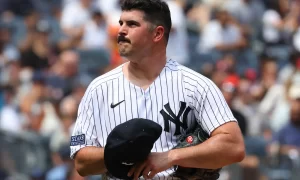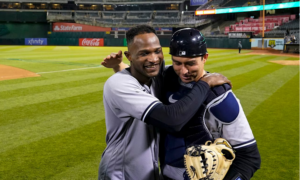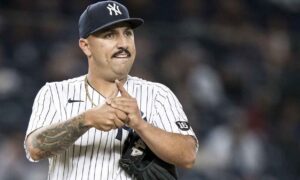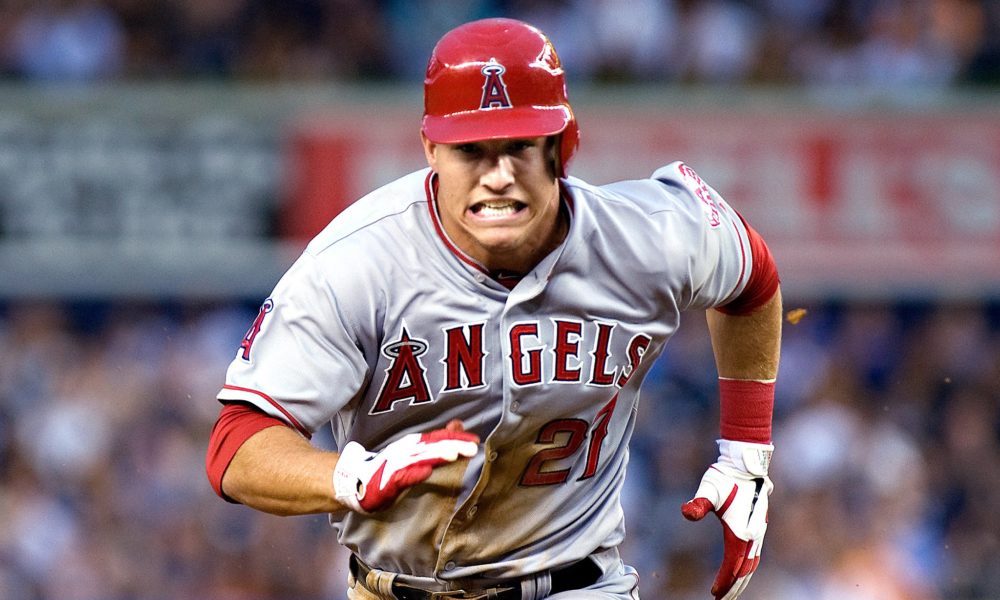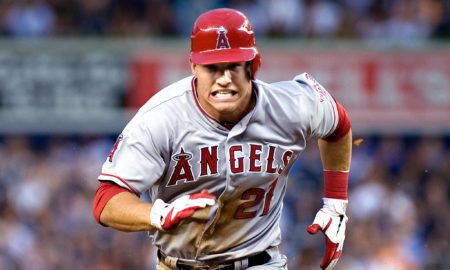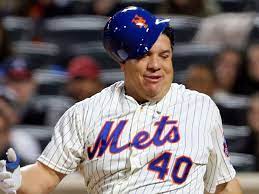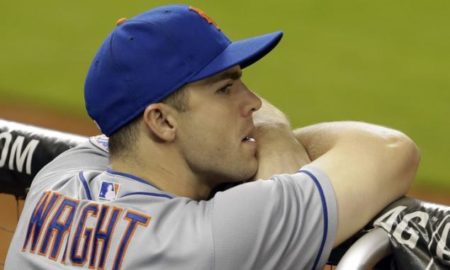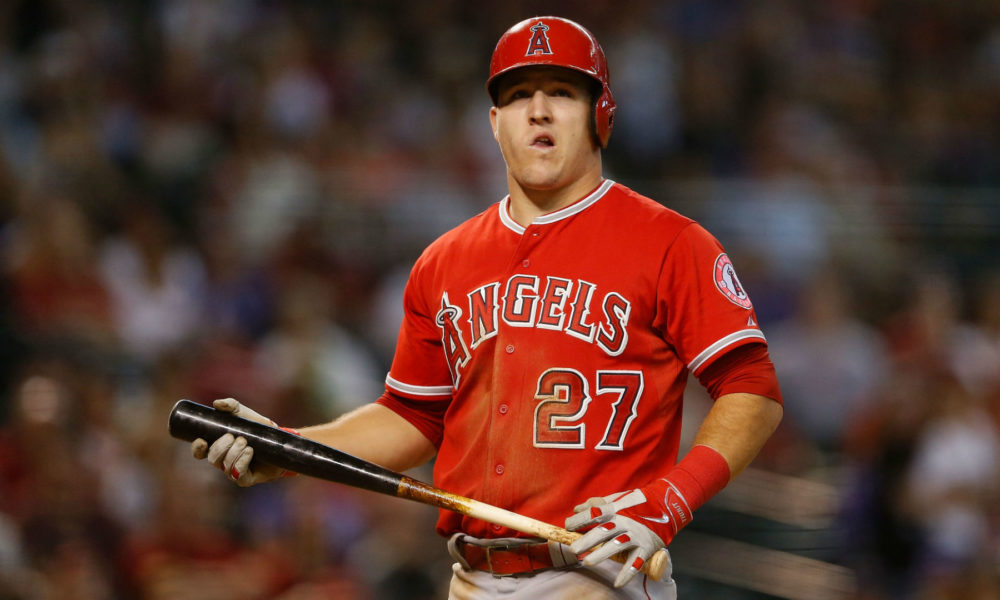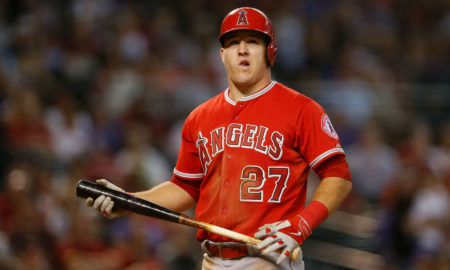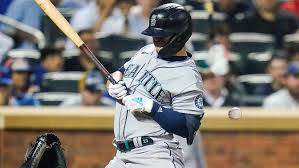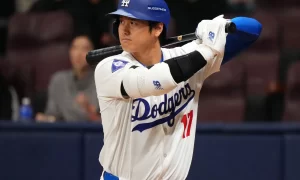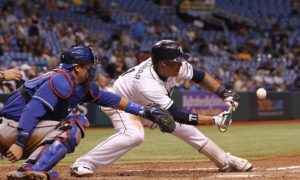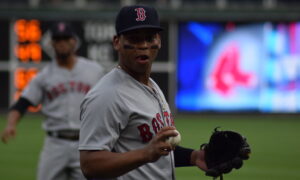Major League Baseball Year In Review 2022
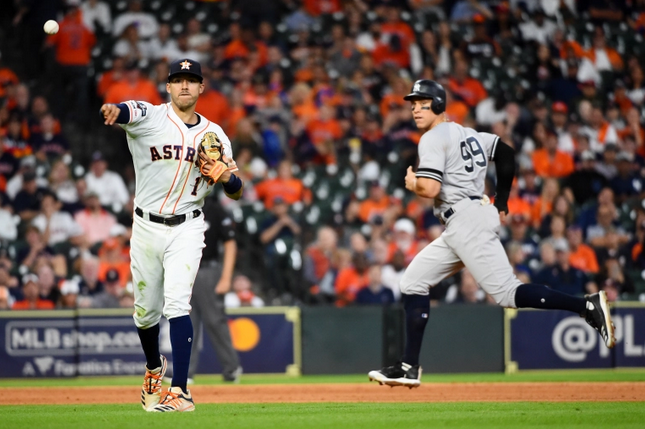
As 2022 winds down, it’s a perfect time to reflect on the past 365 days in your personal life. It’s a time to reflect on what went well, poorly, set new goals, and change for the better. With that in mind, let’s look at what went well (and poorly) in the Major League Baseball world in 2022; call it a baseball year in review.
January—The new year began with the baseball hot stove not only not hot, but completely turned off. Since the start of the lockout on December 2, almost six weeks of nothing passed before the owners made their first proposal to the players on January 13, 2022. One would have thought commissioner Rob Manfred and the baseball owners spent those six weeks crafting a thoughtful, comprehensive, universally-beneficial proposal that would bridge the vast chasm between the two sides. Who are we kidding? They didn’t do anything of the sort.
Instead, the owners’ proposal was the equivalent of moving an inch to bridge a gap of 500 miles. On January 24 and 25, the two sides met on consecutive days and the players union rejected most of the league’s proposal, which meant baseball fans had gone roughly 55 days without any hot stove action, but at least season 4 of Ozark had dropped on January 21.
February—In ongoing lockout news, the two sides met for 90 whole minutes on February 1, with the MLBPA putting the universal designated hitter and an expanded, 12-team postseason on the table. Traditional baseball fans everywhere hate both ideas but what are they going to do, stop watching baseball? Bwahahahahahaha!
On February 10, commissioner Rob Manfred addressed the media for the first time during the lockout, which at this point had lasted 70 days, making it the second-longest work stoppage in MLB history and longer than the gestation period of a typical dog. Rob Manfred had nothing of substance to say to the media and, even more disappointing, no newly-born puppies on hand.
March—On March 1, Rob Manfred announced the first two series of the regular season were canceled. “I had hoped against hope I wouldn’t have to have this press conference where I am going to cancel some regular season games,” Manfred said following the March 1 deadline. (cue the “Who could have done this?” meme). “We worked hard to avoid an outcome that’s bad for our fans, bad for our players, and bad for our clubs. Our failure to reach an agreement was not due to a lack of effort by either party.”
Manfred failed to point out that the owners could end the lockout at any time and negotiations could continue during the season under the parameters of the previous CBA without any games being canceled. He must have forgotten that part of it.
On March 10, after weeks of negotiations that included some gripping late-night parking lot play-by-play that had Twitter all a-twitter, the two sides come to an agreement and the lockout ends at 99 days. Coincidentally, that’s the uniform number of Yankees outfielder Aaron Judge.
On March 18, free agent Freddie Freeman signed a six-year deal with the Los Angeles Dodgers after spending his entire professional career with Atlanta. Over time, this trade and Freeman’s feelings about it would prove that there is, in fact, crying in baseball.
On March 27, the Will Smith slap dominated the headlines. Oh wait, that was the actor Will Smith, not the catcher Will Smith or the relief pitcher Will Smith. Never mind.
On March 28, Albert Pujols signed a one-year deal with the St. Louis Cardinals. He’ll likely spend most of the season on the bench mentoring his younger teammates and maybe getting into a couple games a week. There’s simply no way he will hit .270/.345/.550, with 24 homers in 109 games and become just the fourth player ever with more than 700 career dingers.
April—The long, national nightmare for baseball fans finally ends when Opening Day arrived on April 7. In St. Louis, 40-year-old Adam Wainwright tossed six scoreless innings and earned a win against the Pittsburgh Pirates, who are still a Major League baseball team only because MLB doesn’t have relegation. Wainwright would finish the year with 2.8 WAR (per FanGraphs), which ranks 42nd in MLB since 1947 (post-integration) for a pitcher age 40 and over.
By the end of April, the position player leaderboard in FanGraphs WAR has a top five of Manny Machado, Nolan Arenado, Jose Ramirez, J.P. Crawford, and Mike Trout. One of these things is not like the others.
Also in April, MLB superstar Shohei Ohtani is part of a national campaign for FTX, the official cryptocurrency exchange of Major League Baseball. The Great Cryptohtani was a global FTX ambassador in November of 2021 and would be compensated entirely in crypto.
“Shohei isn’t just an athletic force, he’s a first-mover for financial autonomy” shared FTX Co-Founder and CEO, Sam Bankman-Fried, on the brand’s latest sports marketing play. As part of FTX being the official cryptocurrency exchange of Major League Baseball, big league umpires started wearing FTX patches on their uniforms during the 2021 season and continued to wear them during the 2022 season.
In the Bronx, a Yankees hitter launches nine homers in the team’s first 21 games, putting him on pace for 69 homers in 162 games, which would destroy the AL record of 61 set by Roger Maris and approach the all-time record of 73 by Barry Bonds. Unfortunately, Anthony Rizzo couldn’t keep up that pace and finished the season with just 32 homers.
May—Through May 15, the leaguewide batting line is .234/.307/.376 and there is plenty of hand-wringing as it appeared a new dead ball era was upon us. Something seemed to change in the middle of May, though. From April 7 through May 15, 3.8 percent of balls in play went for home runs. From May 16 to the end of the season, 4.3 percent of balls in play carried over the wall. Rob Manfred could not be reached for comment.
Marcus Semien’s fortunes at the dish aligned with the league as a whole, only taken to the extremes. Through May 15, Semien hit .157/.216/.213, with 0 homers in 139 plate appearances. From that point on, he hit .270/.325/.481, with 26 homers in 585 plate appearances.
Through May 24, the Los Angeles Angels were 27-18 and in 2nd place in the AL West, just one game behind the division-leading Houston Astros. Mike Trout (214 wRC+) and Taylor Ward (235 wRC+) were crushing the ball. Shohei Ohtani had nine homers, six steals, and a 2.82 ERA. Anthony Rendon had played in 39 of the team’s first 45 games and had an above-average 112 wRC+. Michael Lorenzen and Noah Syndergaard were a combined 9-4 with a 3.06 ERA. Behind quirky, lovable manager Joe Maddon, it looked like this could be the year the Angels and Mike Trout return to the playoffs. Dust off your rally monkeys, Angels fans!
An outfielder who has spent considerable time in his career playing on a team in the AL East was tied for the MLB lead with 12 home runs In May. Along with those 12 homers, Mookie Betts had 31 runs scored and a .341/.411/.746 batting line for the month.
June—June was a month of streaks. After closing out May with a walk-off loss to the Arizona Diamondbacks, Atlanta was 23-27 and 10.5 games behind the New York Mets in the NL East. Then they won 14 straight to close the gap to four games.
Life was not nearly so good across the country, where the Angels lost 14 straight games from May 25 through June 8, with an average margin of defeat of 3.2 runs per game. By the time the streak reached its course, the Angels had dropped from one game out in their division to 9.5 games out and a-little-too-quirky and not-so-lovable Joe Maddon had been fired.
Back in mid-April, when Maddon was still quirky and lovable, he ordered an intentional walk to Corey Seager with the bases loaded and the Angels down by two runs in the fourth inning. It was a move that flummoxed even the usually unflappable Mike Trout. The ensuing batter hit a sacrifice fly and another run came in on a balk to make it 6-2, but the Angels rallied for a come-from-behind victory, which just illustrated the genius of Joe Maddon, at least in April. By June, he was no longer a genius. As Ferris Bueller once said, “Life moves pretty fast. You don’t stop and look around once in a while, you could miss it.”
In the midst of what looked to be an MVP-caliber season, Philadelphia Phillies outfielder Bryce Harper, hitting .318/.385/.599, suffered a broken thumb on a hit-by-pitch. This would undoubtedly end any hopes the Phillies had of making the playoffs.
June was another big home run month for an outfielder whose team plays their home games in the Eastern time zone, as Philadelphia’s Kyle Schwarber led all of baseball with 12 dingers.
July—Following in the footsteps of Atlanta, the Seattle Mariners embarked on a 14-game winning streak that lasted from July 2 through July 17. Driving the run production during this time was, surprisingly, Carlos Santana (162 wRC+) and Eugenio Suarez (140 wRC+), which made it feel like 2019 all over again, back when Santana hit 34 homers and Suarez hit 49.
At the Home Run Derby during the All-Star Game festivities, 42-year-old Albert Pujols outslugged Kyle Schwarber in the first round, 20 homers to 19, but would go on to lose to Juan Soto in the second round, 16 homers to 15. Soto had eliminated Jose Ramirez in the first round.
Reigning two-time home run champion Pete Alonso, who was looking for a three-peat, knocked out Ronald Acuña Jr. in the first round, but couldn’t get past rookie sensation Julío Rodríguez in the second round. Rodríguez had smashed an incredible 32 homers to beat Corey Seager in the first round, then hit 31 more to beat Alonso in the second round.
That set up the finals consisting of Juan Soto versus Julío Rodríguez. The rookie hit 18 homers in his turn at the plate, but could only sit back and watch as Soto outdid him with 19.
In related July news, NASA released images captured by the James Webb Space Telescope—the most powerful telescope ever built—and baseball historians believe they spotted a baseball flying through space that was hit by Josh Gibson of the Homestead Grays back in 1943.
August—On August 11, the MLB at Field of Dreams game was back for another year, with the Chicago Cubs beating the Cincinnati Reds in Dyersville, Iowa. Ken Griffey Sr. and Ken Griffey Jr. played catch as part of the pre-game ceremonies, which was followed by the introduction of an assortment of Hall of Fame players who had played for the Cubs or Reds, including Johnny Bench, Andre Dawson, Fergie Jenkins, Barry Larkin, Ryne Sandberg, and Billy Williams.
The MLB at Field of Dreams game was a sentimental and heartwarming event for many people across the country and also a reminder to Iowans of the draconian blackout policies of MLB that prevents people in Iowa from watching the games of the White Sox, Cubs, Twins, Brewers, Cardinals, or Royals. Regarding the MLB blackout rules, Rob Manfred could not be reached for comment.
September—On September 8, Queen Elizabeth II died at the age of 96, having reigned for 70 years, making her the Connie Mack of the monarchy. She was crowned in 1952, just two years after Connie Mack managed the last of his 50 years with the Philadelphia Athletics. Queen Elizabeth is best known for throwing out the first pitch at an Angels game in 1988.
On September 11, Albert Pujols launched his 697th career home run, moving him past Alex Rodriguez into fourth place all-time, behind only Barry Bonds, Hank Aaron, and Babe Ruth. Twelve days later, he hit number 700 at Dodger Stadium.
On September 30, Seattle Mariners catcher Cal Raleigh, known affectionately as Big Dumper, hit a walk-off home run to clinch the first playoff berth for the Mariners since 2001. Big Dumper’s dinger ended the longest active playoff drought in baseball, with the Detroit Tigers and Los Angeles Angels now holding the title (8 years).
Speaking of the Angels, with a league-leading 12 homers across the combined months of September and October, American League outfielder Mike Trout had a terrific final stretch (211 wRC+). His teammate, Shohei Ohtani, went 4-1 with a 1.18 ERA in September/October while hitting .291/.341/.479 as a DH. Despite it all, the Angels still finished below .500 for a seventh straight season.
October—Leading off Game 161 against Jesus Tinoco of the Texas Rangers, Yankees outfielder Aaron Judge hit his 62nd home run of the season, to pass Roger Maris for the AL record. Judge finished the season with league-leading totals in runs, homers, RBI, walks, total bases, on-base percentage, slugging percentage, wRC+, and WAR. Per FanGraphs WAR, Judge had the seventh-best season since MLB was integrated by Jackie Robinson in 1947. Only Barry Bonds (2002, 2001, 2004), Mickey Mantle (1956, 1957), and Pedro Martinez (1999) were better.
On the other end of the spectrum, the Oakland A’s finished the year with a .281 OBP, which was the second-lowest mark by a team in the last 75 years (since 1947). Only the 1965 New York Mets were worse (.277 OBP). Not content to be second-worst heading into the 2023 season, the A’s traded away their best hitter, Sean Murphy, in December.
At season’s end, in addition to the Seattle Mariners ending their long playoff drought, the Philadelphia Phillies snagged the final wild card spot in the National League. The Phillies then breezed their way through St. Louis, Atlanta, and San Diego in the NL playoffs before losing in the World Series to the Houston Astros.
The Astros’ World Series victory earned Dusty Baker his first World Series ring as a manager. He also won a World Series as a player with the 1981 Los Angeles Dodgers. As a reward for taking the Astros to the playoffs in each of his three years with the team, including back-to-back World Series appearances and a World Series title, Dusty Baker was reluctantly signed to a one-year contract by Astros owner Jim Crane, who seemed to really really really want to fire him.
November—As the new owner of Twitter Elon Musk starts making decisions that turn the site into a daily dose of chaos and doom, baseball writers start to dip their toes in alternatives such as Mastodon, Hive Social, and Post, along with the already-established social media sites Instagram, Reddit, and TikTok, all of which suddenly became way less cool among the age 13-29 demographic.
Shohei Ohtani finished the year with 90 runs scored, 34 homers, 95 RBI, 11 steals, and a .273/.356/.519 hitting line. His 142 wRC+ is 16th in baseball, just a little lower than Mookie Betts (144 wRC+). As a pitcher he went 15-9 with a 2.33 ERA, 1.01 WHIP, and 219 strikeouts in 166 innings. His 26.5% K-BB% is the best in baseball for qualifying pitchers. He was essentially Mookie Betts on offense and Max Fried on the mound. Despite the most amazing all-around season any of us have ever seen, he doesn’t come close to winning the AL MVP Award because, well, Aaron Judge.
Speaking of Shohei Ohtani, also in November, cryptocurrency giant FTX collapses and files for bankruptcy on November 11. No word on the damage done to the finances of Shohei Ohtani, but there’s a good chance he’ll make up for any losses when he signs a 10+ year, blank check contract with the New York Mets after the 2023 season.
Because of the collapse of FTX, big league umpires will no longer wear FTX patches on their uniforms. Before you question the judgement of MLB umpires for the decision to wear FTX patches, know the blame really lies with Rob Manfred, who could not be reached for comment.
December—When Jon Heyman tweeted on December 6 that “Arson Judge” was signing a free agent deal with the Giants, only to retract that assertion later, baseball fans likely thought that would be the weirdest thing to happen in the offseason. Then the Carlos Correa debacle came along. Correa reportedly signed with the Giants for 13 years and $350 million and was preparing for the introductory press conference when it was suddenly canceled because, apparently, the Giants had some concerns about an injury Correa suffered many years ago.
Money Bags Steve Cohen then swooped in and reportedly signed Correa to a 12-year, $315 million deal. That’s one year and $35 million less than the Giants’ reported deal, but it’s still a nice chunk of change. Now that signing is in limbo as the Mets have concerns about Correa’s long-term health. On December 26, it was reported that the Mets may be looking into restructuring the deal, which Correa is opposed to. Yesterday, Off The Bench published our guesses on where Correa signs in the coming weeks.
On the bright side, if one year and $35 million continue to be lopped off the contract with each successive team that wants to sign Correa, by the time it gets down to four years and $35 million, maybe even the Pittsburgh Pirates will be interested.
-Bobby Mueller

